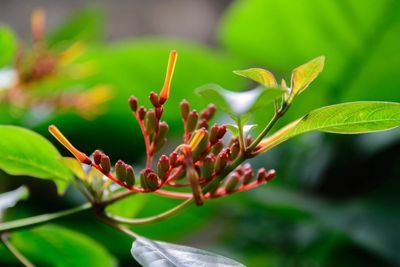What is Firebush Good For?
Firebush plants are native to the American tropics and subtropics, and are very tolerant of both heat and drought. They flower throughout almost the entire year (provided they’re not exposed to frost) and have bright red foliage in the fall. Because of this, they are very useful in gardens with oppressively hot summers, providing colorful, flashy interest when most other plants would wither. Their red, tubular flowers are also extremely attractive to hummingbirds, making them an obvious choice for hummingbird gardens and easily observable spots near windows and porches. They also grow very well in mass plantings, where they form a sea of bright red leaves in autumn. They can be planted in rows to achieve a dense and beautiful hedge effect as well, although they will require a certain amount of pruning to keep growth in check.
How to Use Firebush Beyond the Garden
While it is primarily prized for its attractiveness in the landscape, there are several other uses for firebush. The small, black, oval berries are completely edible, although they aren’t especially tasty eaten raw. Many gardeners cook them into jellies, jams, and syrups. There’s a long history of using firebush as a medicinal plant, especially in Central America. Extracts from the leaves have been used for centuries for their antifungal, antibacterial, and anti-inflammatory properties. Teas made from leaves, flowers, and stems have been used to treat wounds, burns, insect bites, fever, menstrual cramps, and diarrhea. As always, it’s best to consult with a doctor before self-medicating with this or any plant. Disclaimer: The contents of this article is for educational and gardening purposes only. Before using or ingesting ANY herb or plant for medicinal purposes or otherwise, please consult a physician or a medical herbalist for advice.
